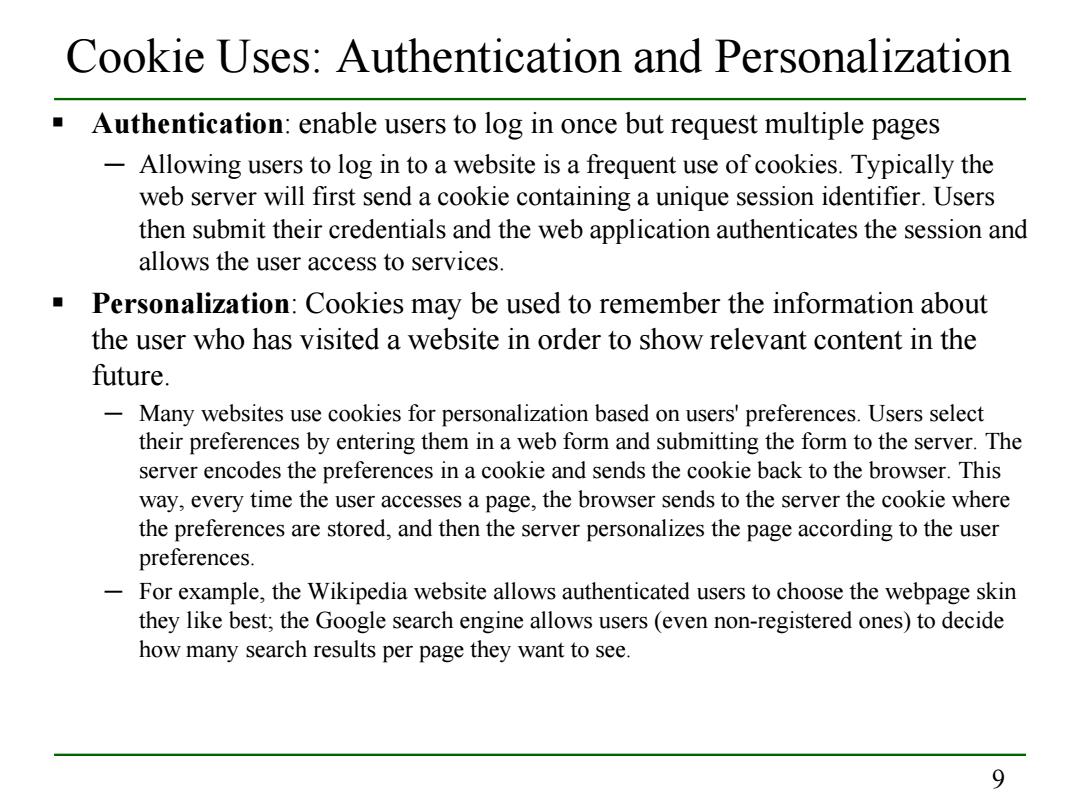正在加载图片...

Cookie Uses:Authentication and Personalization Authentication:enable users to log in once but request multiple pages -Allowing users to log in to a website is a frequent use of cookies.Typically the web server will first send a cookie containing a unique session identifier.Users then submit their credentials and the web application authenticates the session and allows the user access to services. Personalization:Cookies may be used to remember the information about the user who has visited a website in order to show relevant content in the future. Many websites use cookies for personalization based on users'preferences.Users select their preferences by entering them in a web form and submitting the form to the server.The server encodes the preferences in a cookie and sends the cookie back to the browser.This way,every time the user accesses a page,the browser sends to the server the cookie where the preferences are stored,and then the server personalizes the page according to the user preferences. For example,the Wikipedia website allows authenticated users to choose the webpage skin they like best;the Google search engine allows users(even non-registered ones)to decide how many search results per page they want to see. 99 Cookie Uses: Authentication and Personalization Authentication: enable users to log in once but request multiple pages ─ Allowing users to log in to a website is a frequent use of cookies. Typically the web server will first send a cookie containing a unique session identifier. Users then submit their credentials and the web application authenticates the session and allows the user access to services. Personalization: Cookies may be used to remember the information about the user who has visited a website in order to show relevant content in the future. ─ Many websites use cookies for personalization based on users' preferences. Users select their preferences by entering them in a web form and submitting the form to the server. The server encodes the preferences in a cookie and sends the cookie back to the browser. This way, every time the user accesses a page, the browser sends to the server the cookie where the preferences are stored, and then the server personalizes the page according to the user preferences. ─ For example, the Wikipedia website allows authenticated users to choose the webpage skin they like best; the Google search engine allows users (even non-registered ones) to decide how many search results per page they want to see